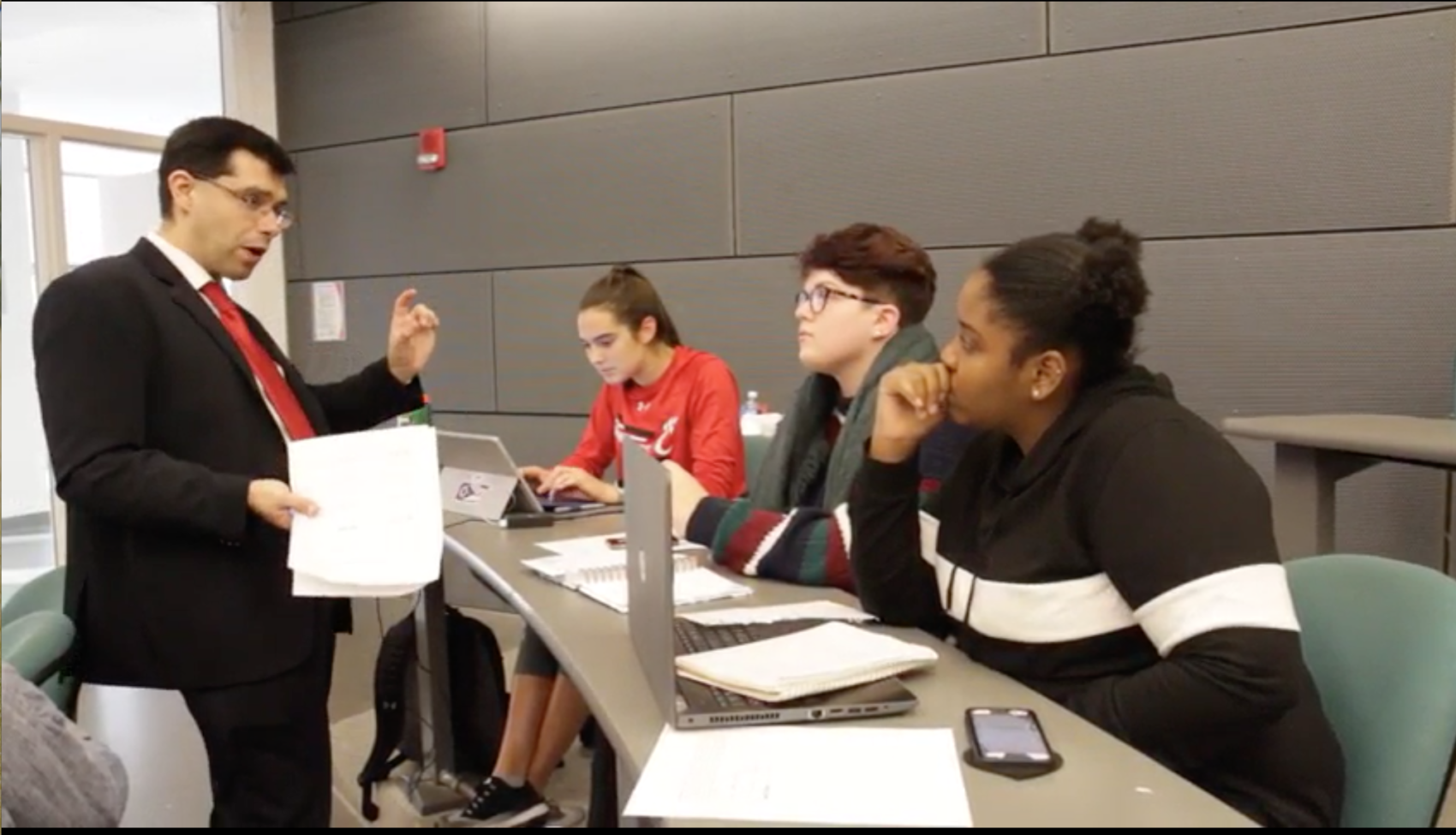Inside Higher Education Webinar: Improving Student Success with Video and Active Learning

In a recent webinar hosted by Inside Higher Education, three leading universities described some of the innovative ways they use Echo360 academic video technology to improve student success.
Presenters from the University of Massachusetts at Boston, the University of Toledo, and the University of Cincinnati shared how their institutions have moved beyond traditional lecture capture by combining video technology with student engagement tools and analytics. This not only gives students access to course content on-demand but provides digital tools that encourage greater in-class engagement and participation, collaboration, and more efficient studying.
Here are some of the highlights of the webinar.
At U Mass Boston, Real-time Formative Assessments Give Students Insight into Their Own Learning
Dr. Andrew Perumal, Associate Professor of Economics at the University of Massachusetts at Boston, described how he uses Echo360 to interact with students in large enrollment, lecture courses.
“I saw the use of Echo360 as a means of continuing the same level of engagement and interaction with students that we had in smaller classes,” says Perumal. Since the Spring of 2015, he has taught more than 750 students in both face-to-face and online classes using Echo360.
By using Echo360’s question and polling features, Perumal is able to create a wide-range of questions that test student understanding of the material he presents. But, according to Perumal, since students receive real-time feedback, they gain immediate insight into their own learning and an understanding of what they know or don’t know. By using a wide spectrum of question types, Perumal can ensure students explore the full depth of their knowledge. Since they receive immediate feedback, they do not have to wait until they submit a written assignment or perform poorly on an exam. Students can take immediate steps to take control of their own learning.
Another innovative method Perumal uses are “one-minute papers” to solicit feedback from students at the end of each class. In these short essays, students reflect on the content he has just presented and identify areas where they are confused or do not understand. Perumal uses this information to revisit these topics in future class sessions, either by creating additional exercises or by simply reviewing the content in question.
“White Glove” Treatment Helps Boost Echo360 Adoption at the University of Cincinnati
Like many institutions, the University of Cincinnati has experienced an explosion of video content on campus. Within lecture halls and teaching spaces alone, classroom video captures include traditional lecture capture, guest speakers, student presentations and speeches, laboratories and simulations, rehearsals, critiques, and evaluations. Since the summer of 2016, the University of Cincinnati has consolidated its lecture capture and video technology using Echo360. In the past academic year, more than 14,000 video sessions were recorded.
Tina Meagher, Manager of Video and Digital Media at the University of Cincinnati described some of the ways she and her team has helped to increase adoption of Echo360 on campus.
“We felt that our large gateway courses would be a great place for faculty members to move beyond traditional lecture capture and begin using the engagement features of Echo360,” says Meagher. “These are all large classes with lecture-heavy content and we felt that if we improved student engagement, we could also improve DFW rates in these classes.”
Meagher and her team provided “white glove” treatment to instructors. They provided training on how to use Echo360 effectively. They helped instructors with uploading their presentations to Echo360 and incorporating activities such as questions and polls. The team was present during the first few days of each class to support instructors and to assist with getting students up and running with the system.
As a result of this effort, faculty and student usage increased dramatically. During the past academic year, a total of 92 instructors teaching 27 courses used Echo360. Student usage increased by more than 2000.
Active Learning Helps with Dramatic Drops in DFW rates at the University of Toledo
Dr. Angela Paprocki, Assistant Provost for Curriculum and Instruction at the University of Toledo, sees herself as an advocate for technology that has the capacity to provide equity for all students.
“As an open enrollment institution, the University of Toledo has a responsibility to provide every student with an equitable opportunity for success,” says Paprocki. “We must understand the differences among our students not only from a cultural or generational perspective but everything in between. This allows us to fully engage with students in their campus life and in the classroom. And our end-goal is to see them through successful completion.”
When the university embarked on an ambitious plan to reduce DFW rates in general education courses, they began to incorporate Echo360 student engagement tools. Since 2015, Dr. Paprocki has worked with instructors to redesign their courses, integrate Echo360 as part of the redesign, and focus on active learning methods to increase student engagement.
“We’ve seen a dramatic improvement,” says Paprocki. “In one set of courses alone, the DFW rates have dropped from 40% to 16%. As more and more instructors use Echo360 in their classrooms, we have more and more data that can point to the effectiveness of the technology and teaching strategy. This is very beneficial because it allows our institution to be more data-driven and thoughtful in our decision making.”
To learn more about how these three universities use Echo360, view the webinar archive.

